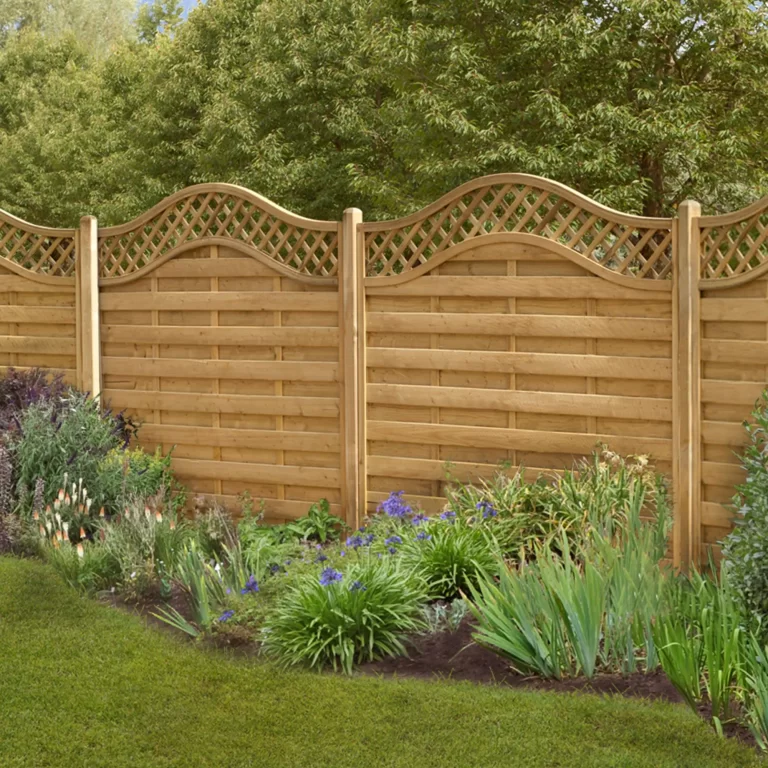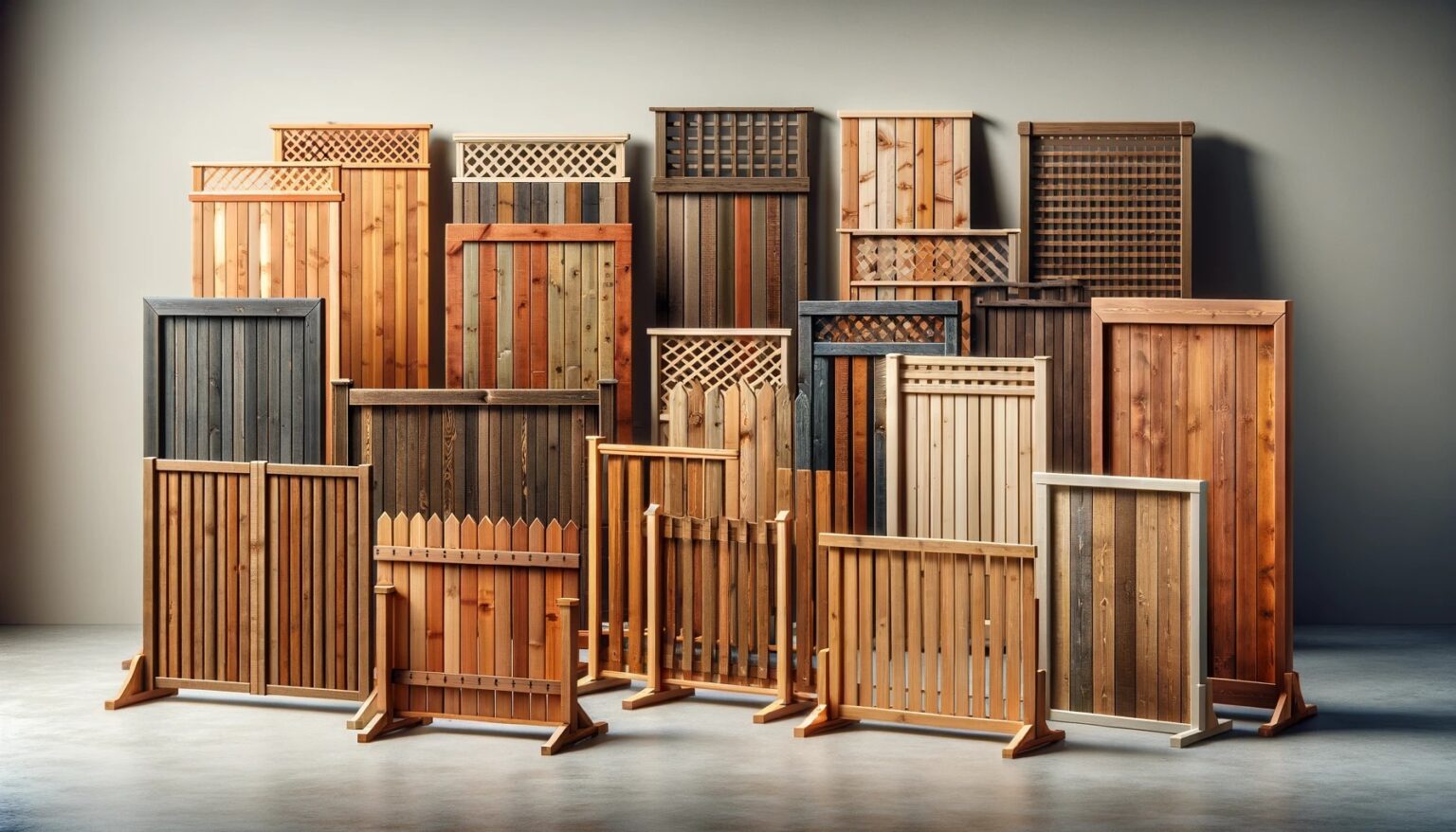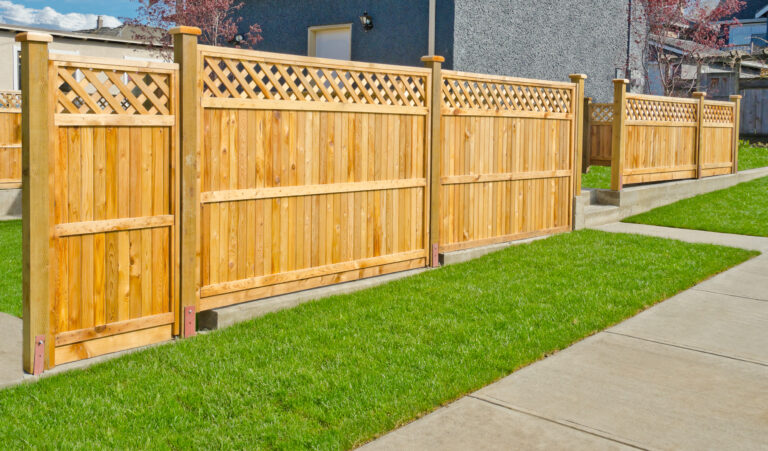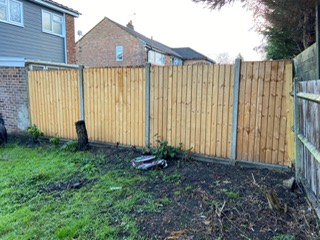Yes, “great walls make great neighbours” is a common phrase and can be applicable in choosing the right kind of fencing for your home. However, when selecting a fence, there are multiple factors to consider beyond just aesthetics. Practical considerations like the height of the fence, its durability, and whether it can keep pets and children contained are also important.
Then, there are the natural elements such as wind and rain, which can damage the wood over time, causing it to rot. Finally, there’s your budget. How much are you willing to spend and are you planning on putting up your fencing yourself or will you hire someone else to do that for you?
Solid Fence panels
As the name suggests, solid fence panels are one of the most sought after types of garden fence. This is on the grounds that they are produced using strong timber boards that border each other to make protection, assist with keeping pets inside, privacy and work well against the natural elements in the event of adverse weather conditions. There are a variety of timber fencing types available, which will be discussed in more detail below.
Feather Board Panels
Feather board fence panels are called like this because they are thicker at one end and taper off on the other end, creating a feather-like appearance. These wooden panels are typically placed next to each other to create a solid-looking “block” of collected timber, thereby falling under the solid fence panels category. These vertical overlapping timber sheets make a flawless looking appearance and are reasonable for a medium size budget.What’s more, is that they can also be supportive of relatively low shrubbery. With this type of fence, you’ll enjoy greater security and increased privacy. They generally come in heights of about 1.8 m, but you’ll have to double-check the height restrictions with your local authority. On the downside, it can be a bit on the expensive side and will require some maintenance to keep its appearance looking good throughout the year.
Larch Lap Fence Panels
Although prone to damage during high wind periods, larch-lap fence panels are another suitable option in the solid fence category. They are for those with a low to medium budget and typically consist of horizontal timber boards which are joined together to create a solid wooden “block”. They can be upheld by one or the other cement or timber posts between each other for added support.
On the plus side, this type of fence is suitable for most gardens and is a cheaper alternative to many other fence types. It is another great way of ensuring privacy and deterring intruders. In addition, it’s ideal for homes with pets. However, with this type of fence, you need to keep in mind that it’s not as robust or long-lasting as other fence types and you’ll be required to maintain your fence in order to prolong the life of the timber.
Close Board Fence Panels
Close board fence panels are vertical wooden panels that are secured in a timber frame. Since there are no holes between these upward boards, they are perfect for protection, security and privacy. However, the absence of gaps may not always permit you to get all the sunshine your garden needs throughout the day. On the other hand, it’s a great choice for those who like to keep intruders out.
Scaffold Board Fence Panels
Scaffold board fence panels are very similar to close board fence panels, with one main difference. Instead of the boards being vertical, they are horizontal. They are enduring and solid and for the most part don’t need a lot of upkeep. Ideal for windy areas, all that you need to do is adjoin them with concrete posts for an extra sturdy fence that is impervious to wind and windy conditions.
Decorative or semi-solid fence panels
Decorative or semi-solid fence panels are fence types that complement different garden fence styles. They make for incredible garden dividers, screens or even beautiful garden features. As their name implies, they usually have slats or holes between the timber panels to create an aesthetically pleasing look. Not used much for privacy or security, however, they can make for a versatile addition to your garden. Here are some of the most common semi-solid fence panels on the market:
Timber palisade / Picket Fencing
Timber palisade fencing is the more regularly realized name is picket fencing, which refers to vertical timber planks joined together with spacing in between them. This creates the picket fence look that was so popular in days gone by. Picket fences can come in PVC or wooden types. With PVC, you’ll be committing to the colour you select but once that’s done, you’ll just need to give it a rinse with a hosepipe every once in a while to get rid of dust and dirt. Wooden picket fences on the other hand require a bit more maintenance and you’ll want to get the right wood protector for your fence.
Hit and miss fence panels
Hit and miss fence panels are distinct and are particularly attractive when it comes to their patterns. They usually are created by smooth-planed horizontal boards that are fixed to the front and back of the panel – in an alternating fashion. It’s appropriate for both contemporary and more customary gardens, however remember that it’s generally focused on those with greater spending budgets. Offering good security and privacy, the gaps between the boards enable the wind to pass through for less wind resistance.
However, they are usually higher maintenance as the boards on the inside of the panel are a bit tricky to get to, especially if you are looking to paint them.
Willow or Hazel Hurdle Fencing
This type of fencing is made using willow or hazels and it can make for a great garden divider or a fence in itself. It’s also a great way of ensuring your privacy as even though there are small slats between the wood itself, it’s not enough for prying eyes to see everything that’s happening in your garden. What’s more, you can involve this sort of fencing to give daylight access and even utilize crawling plants on it to make a “greener” wall.
Venetian Fence Panels
Considered one of the most attractive varieties of fencing panels, Venetian fence panels provide a strong balance between good lighting as well as privacy. They are typically made using thin horizontal slats with small gaps in between. This can make a dazzling scenery to our garden as the small gaps will permit light to enter but also ensure your privacy is respected at the same time.




